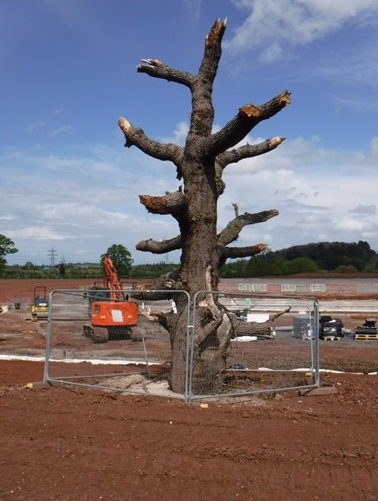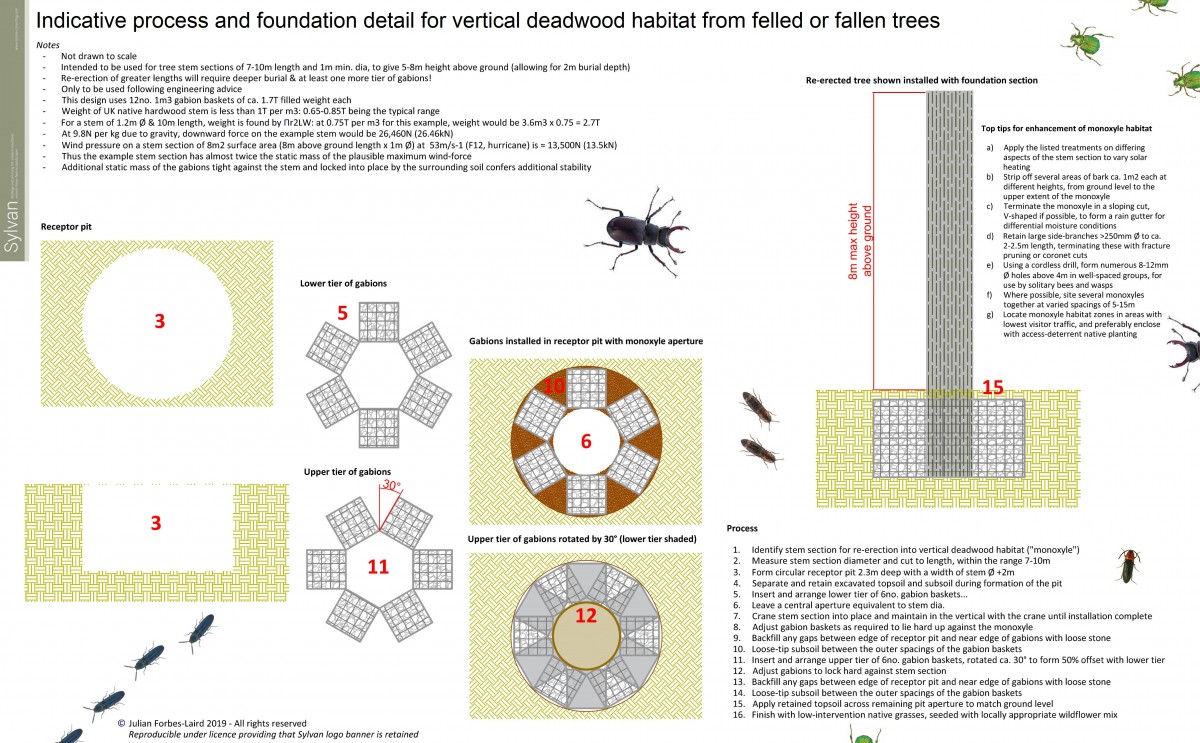Monoxyle Habitat Creation
 Deadwood provides important habitat, supporting a diversity of organisms including fungi and bryophytes, as well as mammals, birds and herptiles. In particular, dead wood is well‐known as an important habitat for a diverse range of invertebrates, with some 1,800 British species known to be dependent on wood decay processes (Alexander 20021). A large proportion of these are local or rare, and many are in decline in Britain and further afield (Kirby 20012).
Deadwood provides important habitat, supporting a diversity of organisms including fungi and bryophytes, as well as mammals, birds and herptiles. In particular, dead wood is well‐known as an important habitat for a diverse range of invertebrates, with some 1,800 British species known to be dependent on wood decay processes (Alexander 20021). A large proportion of these are local or rare, and many are in decline in Britain and further afield (Kirby 20012).
Few sites show continuity of large volumes of dead wood, especially given the tendency to ‘tidy up’ dead wood and ‘unsound’ trees (Fry and Lonsdale 19913). Standing deadwood is of particular importance over fallen deadwood as it provides an increased diversity of conditions and niches available for species to utilise. Such is the importance of the deadwood habitat of trees that Countryside Stewardship grants4 are available for its provision.
Tree removal on development sites is not an uncommon occurrence, and with it the depletion of current or future deadwood resources. As awareness increases as to the importance of deadwood habitats, mitigation measures are beginning to be employed. At the simplest level, deadwood retention in ground-based log piles or similar is of merit and is to be encouraged as it forms an important resource and is well used by invertebrates, including by Priority species such as the Stag Beetle Lucanus cervus.
“the retention of vertical standing deadwood is often of considerably increased value compared to ground based deadwood provision”
However, the retention of vertical standing deadwood is often of considerably increased value compared to ground based deadwood provision. Such standing deadwood provides an increased range of micro-conditions and its natural orientation appears to be strongly preferred by invertebrates (potentially in part due to the orientation of vascular bundles). As such there is considerably elevated value in the retention of standing deadwood on sites.
Where it is not possible to retain the host tree and its deadwood resource in position, consideration should be given to the relocation of the tree as a monoxyle i.e. standing trunk and principal foreshortened bows. An example of such a reduction by others within a site Sylvan has recently worked on is shown in the associated image.
An indicative process and foundation detail for creation of vertical deadwood habitat from felled or fallen trees is shown below:
1
Please feel free to use this graphic as long as Sylvan logos and copyright are observed.
1
1 Alexander, K.N.A. (2002). The invertebrates of living and decaying timber in Britain. A provisional annotated checklist. English Nature Research Reports 467. English Nature, Peterborough
2 Kirby, P. (2001). Habitat Management for Invertebrates: a practical handbook (2nd edition). RSPB, Sandy.
3 Fry, R. and Lonsdale, D. (1991). Habitat Conservation for Insects – a neglected green issue. Amateur Entomologists’ Society, Middlesex
4 https://www.gov.uk/countryside-stewardship-grants/creation-of-dead-wood-habitat-on-trees-te13

